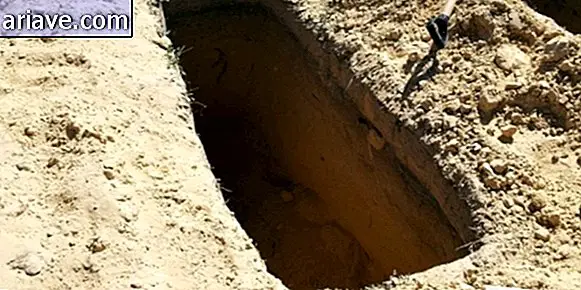Have you heard about the mysterious Lost Labyrinth of Egypt?
If you are a fan of archeology and are always reading about it, then you know that despite all the discoveries that have been made over the centuries, the sands of Egypt still hide many mysteries. One would be a colossal maze built thousands of years ago that would be more impressive and amazing than the pyramids themselves. And how do we know about the supposed existence of this place? Because Herodotus, the illustrious Greek historian, would have been in the maze and left accounts of the visit.
Distinguished Visitor
The testimony of the Greek dates from the 5th century BC, so if such a maze really existed, it would have been built over 2, 500 years ago. According to Herodotus, the structure consisted of two floors and housed three thousand different chambers that were distributed along a tangle of passageways and corridors on two floors.

The lower floor of the immense complex would serve as a tomb for pharaohs and the structure would have a huge chamber carved from a single stone that served as a ceiling for the building. Herodotus was reportedly taken on a "guided tour" only by the upper floor and said that the chambers he saw there were incredibly elaborate and contained carved figures and patterns on the walls.
According to the Greek, one chamber led to another and many were connected by courtyards, columns and galleries. However, he was not on the lower floor, as the Egyptians responsible for caring for the site refused to take him there because it was the site of the pharaohs' tombs responsible for building the complex, as well as crocodiles. Sacred

But Herodotus would have heard that such a forbidden pavement, in addition to serving as a royal - and reptilian - necropolis, would be used for political meetings and the performance of some rituals. Regarding the location of the structure, according to the Greek texts, the maze would be in the vicinity of a place known as “City of Crocodiles, ” located east of Lake Moeris.
In fact, Herodotus was not the only "outsider" to visit the maze. Other figures who would have been there were Diodorus Siculus, Pliny the Elder, Strabo and Pomponius Mela, and all these historians have left similar accounts. But if such a great place really existed, where is the evidence?
Where is it?
The first to locate the ruins of what may have been the wonderful maze was the German Egyptologist Karl Richard Lepsius, who found a vast structure north of Hawara in Fayum. After him, in the late 19th century, it was the turn of the British William Matthew Flinders Petrie to identify what appear to be the foundation of the complex - estimated to be 300 by 250 meters.

More recently, in 2008, a team of scientists carried out radar surveys at the site, and experts apparently identified what appeared to be a huge maze beneath the desert sands. However, to the best of our knowledge, no excavation was conducted at the site, so it is impossible to determine what whatever the researchers found - if they found anything at all - really is the ancient labyrinth of Egypt. And have you, dear reader, heard of this intriguing structure?
***
Did you know that fans of movies and series are now in Clube Minha Serie? In this space, you can also write and find other experts about your favorite shows! Access here and participate.











